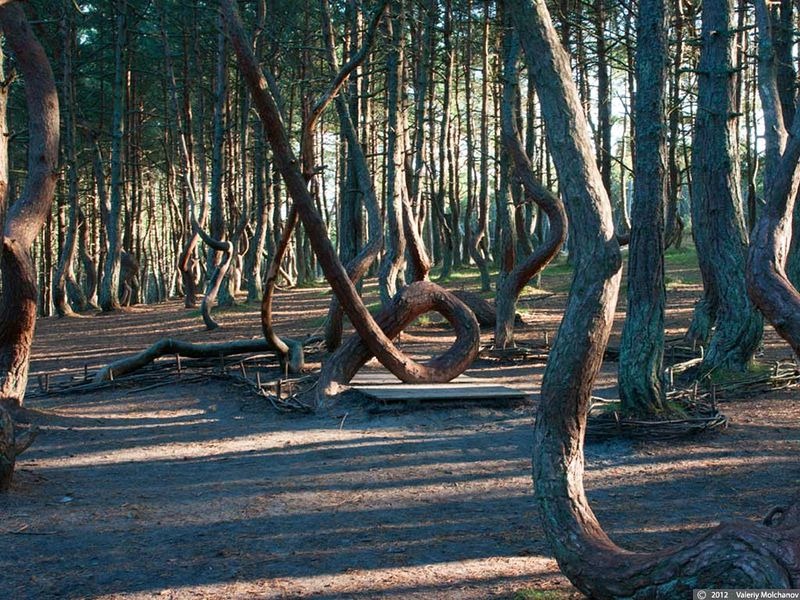A tree, when left to its own equipment, will normally grow straight.
One such location is the Curonian Spit.
Its southern portion lies within Kaliningrad Oblast, Russia, and its here the Dancing Forest is found.
The trees in the Dancing Forest are twisted and deformed into loops and spirals.
The Dancing Forest in Curonian Spit, Kaliningrad.
With the apical bud destroyed, further growth occurs due to the lateral buds only.
Consequently, the trunk and the tree gets an unusual shape.
Such conditions are available on the Curonian Spit.
This collection of curved trees has been named the “Crooked Forest”.
The most intriguing explanation suggests that a group of farmers manipulated the trees after planting them in 1930.
The Crooked Forest of Poland.
They are called Drunken Trees or Drunken Forests.

The rise in global temperatures in the last fifty-or-so years has caused the permafrost to thaw in many places.
Consequently, drunken trees are now an incredibly common phenomenon in Alaska, Canada and Russia.
Fallen trees after the permafrost melted in Fairbanks, Alaska, in 2004.
Photo credit:nationalgeographic.com
Spruce trees tilt because of the ground melting.
Photo credit:nationalgeographic.com
A drunken forest in Alaska.
Photo credit:Lynn D. Rosentrater/Flickr
Trees and vegetation falling into the lake as permafrost melts.
Photo credit:Tingjun Zhang
Also see:

















